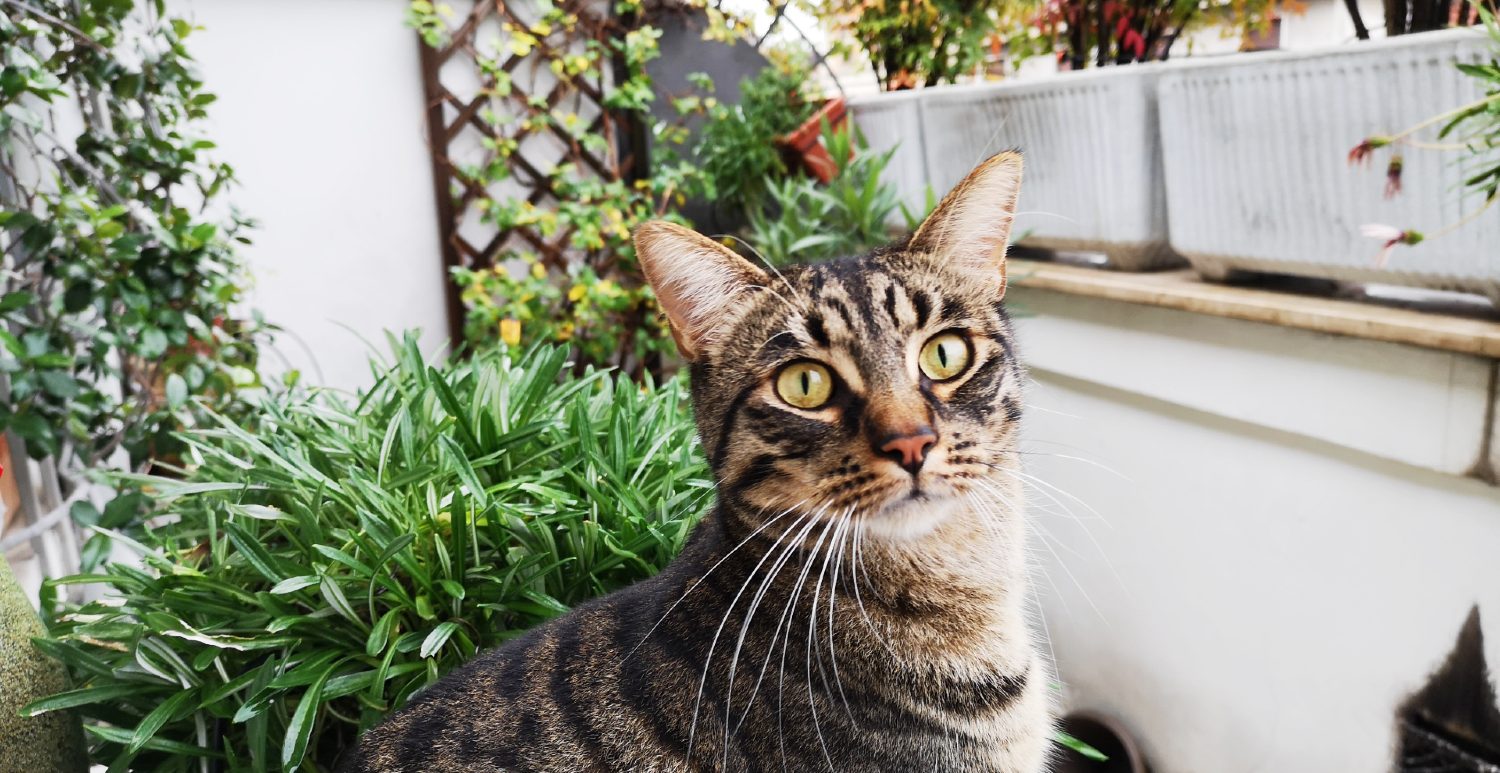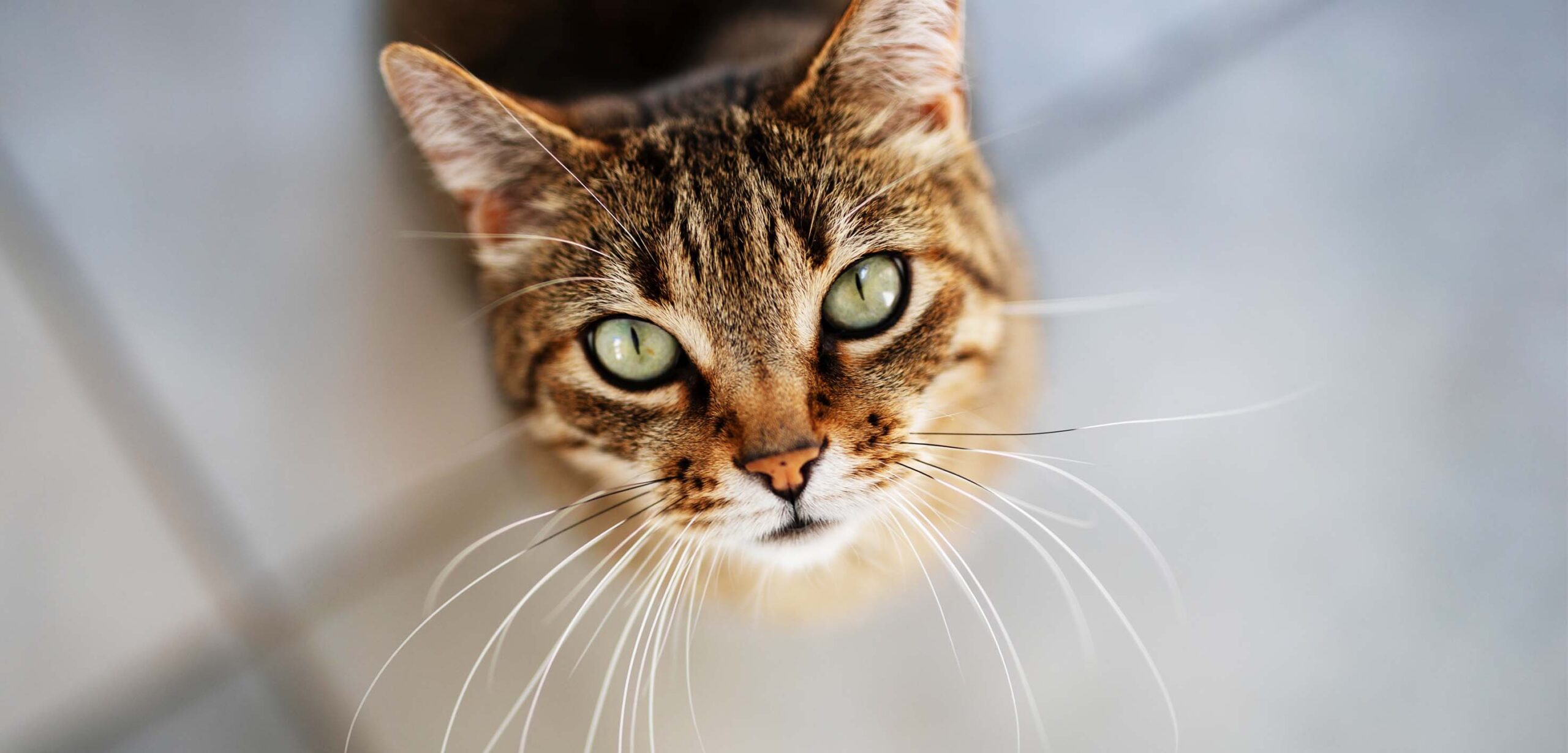You’ve got a lot of questions and even more answers to sort through. It’s a lot. So, what exactly do you need to know about anxiety in cats?
We’ve created this simple guide to answer all of your questions about anxiety, from occasional to separation, and give you the tools you’ll need to help your cat through.
Let’s get into it.
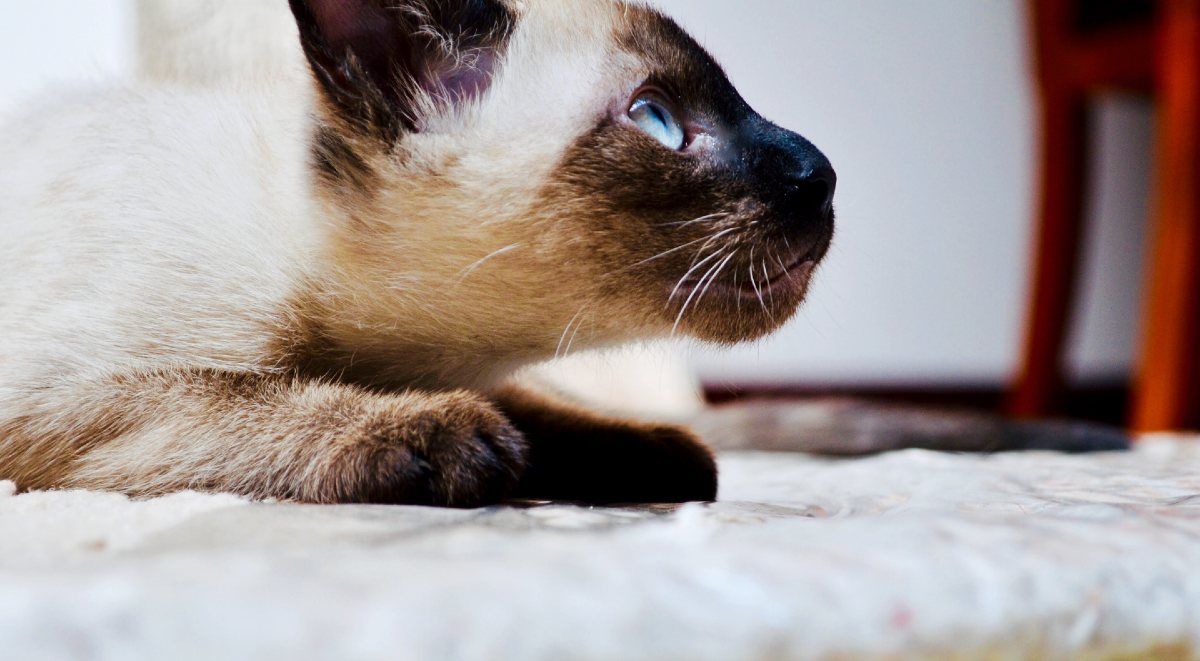
On The Agenda
What is Cat Anxiety?
Cat anxiety, much like human anxiety, is the anticipation and worry of the future. It doesn’t necessarily matter whether it’s an unknown threat, imagined, or real. What’s most important is the emotion that it creates. Your cat’s body responds to the stress and anxiety (think trembling and increased heart rate), which spurs changes to his behavior.
What Does Anxiety Look Like
Cat anxiety can be obvious (trembling at the sight of a dog) or subtle (avoiding eye contact).
As pet parents, it’s our job to tune in to our cat’s behavior and practice careful observation.
Just like us, anxiety manifests in many ways. Some people show anxiety as anger and aggression. Others just take flight and high-tail it out of a situation.
You may have seen one or even a few of these behaviors in your own cat:
- Pacing
- Hiding
- Not eating
- Increased vocalization (sooo many meows)
- Trembling
- Excessive grooming
- Aggression like hissing or growling
- Avoiding eye contact
- Shifting body or head away
- Tucking or flicking the tail
- Ears pinned back
- Fixating on the stimulus
- Crouching and leaning away
- Trying to escape or freezing in place
- Fully dilated pupils
- Hair standing up
- House Soiling– eliminating outside of the litter box
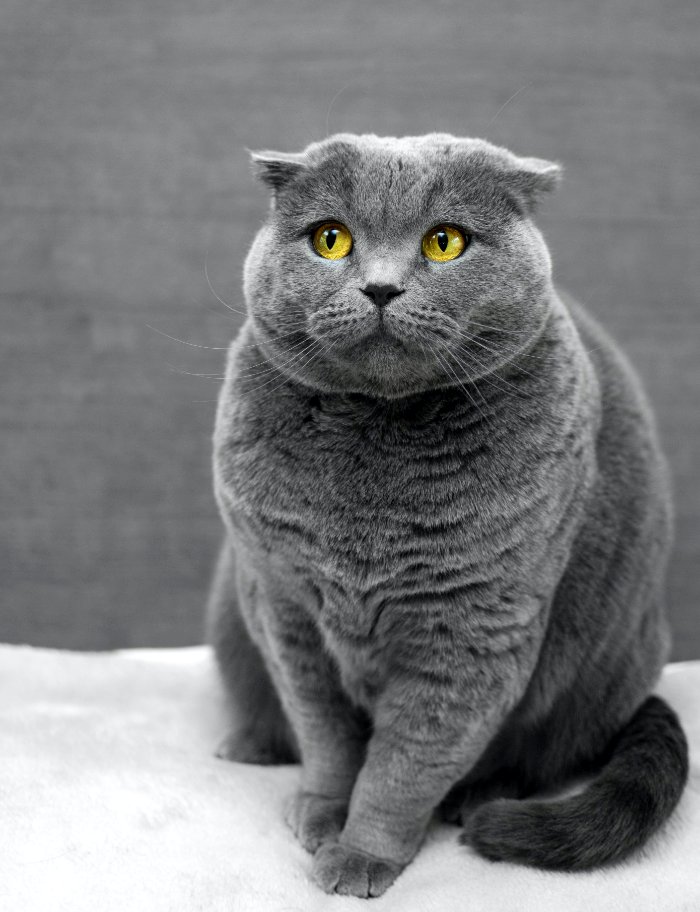
Anxiety manifests in many ways, so don’t take these textbook symptoms as gospel. They can point you in the right direction, but you know your cat best. Apply common sense– your social cat suddenly ghosting means you need to do a bit of digging. But also consider the context– like your social cat being fixated on the new feeder that’s playing host to the neighborhood warblers.
You may see the aftermath of anxiety and stress more often than the symptoms. After all, the number one behavioral issue in stressed cats– peeing outside the litter box.
Why Does Anxiety Happen?
Just like you and me, cats may react anxiously to life events, both big and small. While we know that big changes (like moving houses) can be unsettling, we might not notice how smaller changes (like moving your couch to the opposite side of the living room) can also impact our cat’s behavior.
There are a number of triggers that could cause anxiety – frankly, it’s a lengthy list.
Trauma
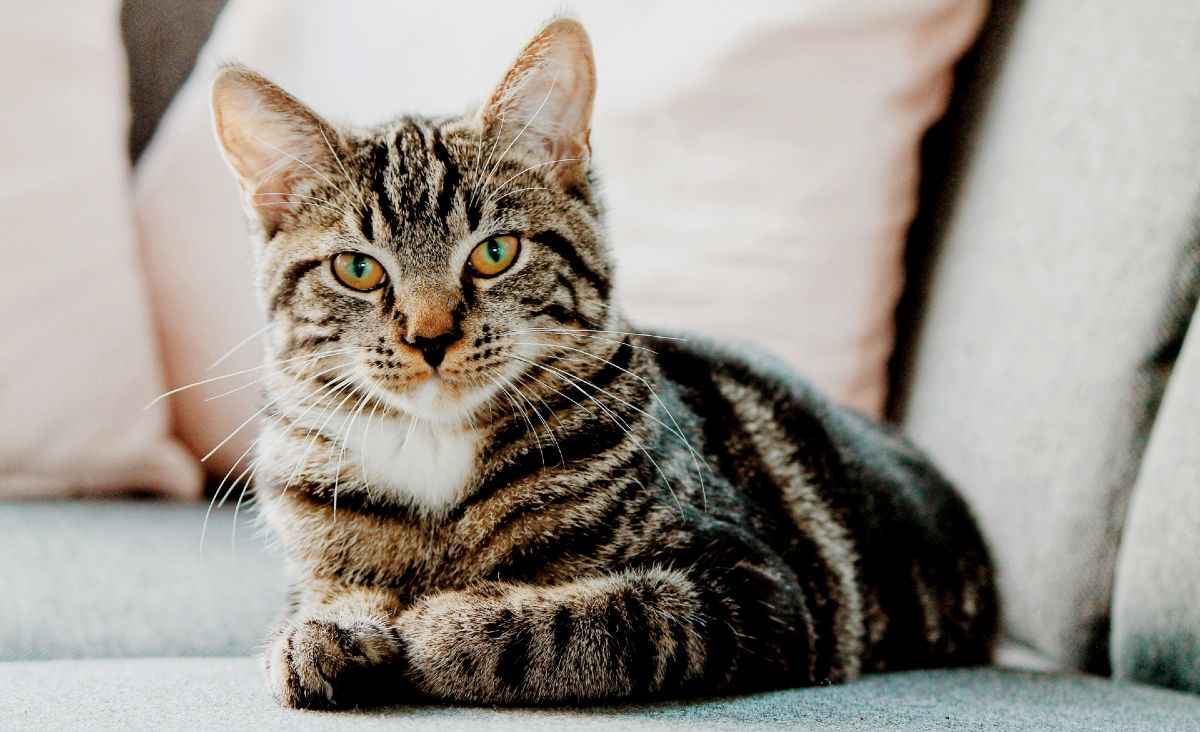
Both big “T” and little “t” traumas can distress our kitties. Abandonment is a big “T” trauma, while suddenly changing your schedule could be a little “t” trauma, but both can have lasting effects on your kitty.
These negative experiences could have happened just once or repeatedly, maybe even in the early socialization period. These events could be real or perceived and related to people, places, or things– remember, whether seemingly traumatic to the two-legger or not, all that matters is your cat found an experience traumatic.
Limited early socialization
There’s a small window of opportunity for every kitten– this socialization period is crucial. Kittens deprived of diverse experiences and positive social interactions like rolly polly wrestling with littermates, new places, faces, and pets from stranger’s hands at a young age can be prone to developing anxiety and be less sociable as adults.
Your cat needs more emotionally, physically, mentally
Cats form an incredibly close bond with their hooman, and if they aren’t getting enough playtime or attention, they can get bored and frustrated. That emotional stress can trigger anxious behaviors.
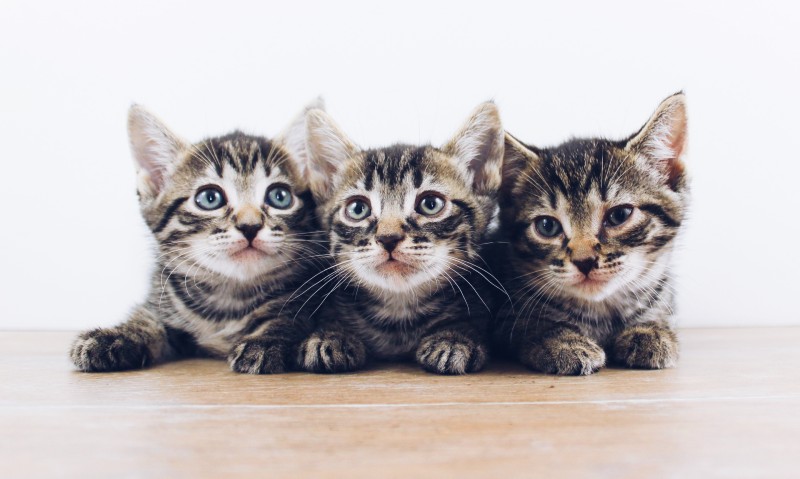
Uncertainty
Maybe there’s a change in routine or to their environment. Each experience creates all of these conflicting emotions that fester – frustration that the litter box was moved, worry about the lack of routine in their lives, concern that they aren’t being fed at their customary crack of dawn dining time. All of these emotions can bubble over into anxiety.
Personality
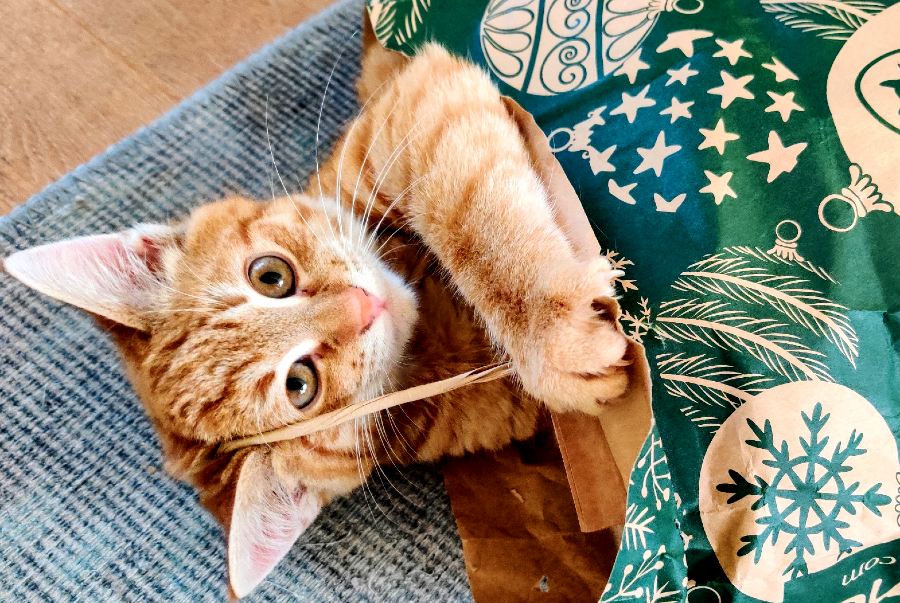
There are personality types to figure into this as well. The acrobatic and athletic breeds like the Abyssinians and Bengals of the cat world always seem to have a lengthy agenda for the day. Because of their need for a job and tireless play, these cats can also be more easily excitable and anxious.
Of course, anxiety could be caused by a combination of these, too. Your cat is shaped and molded by every single experience she has, good or bad. Their environment, interactions with two and four-leggers all affect your cat’s mental and emotional wellbeing.
Who Gets Anxiety?
Every single cat can and likely will experience anxiety. It’s a normal emotional response, after all.
While any cat can get anxiety, there are, of course, the physical and developmental factors that may make some more likely to develop anxiety over their lives.
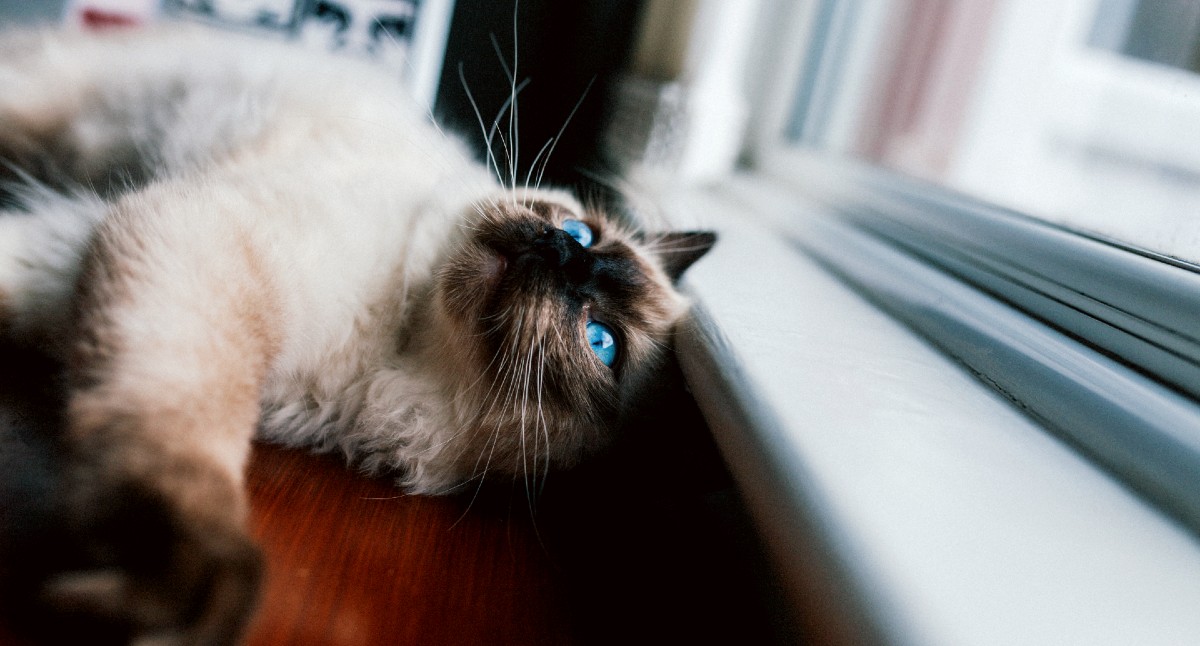
- Some of our beloved highly-strung breeds, like Siamese and Burmese cats, may be more likely to develop anxiety. While you cannot change a cat’s genetics, you can do so much to help them relax and be their best selves.
- Stressful perinatal environments– so either stress in the womb or as a newborn kitten can also play a factor.
- A disease or disorder affecting brain health– dementia and disorders like OCD can also play a role.
The big mewsings, though? Any cat, yours included, could experience anxiety. And like any mental health concern, it’s best to tackle it as soon as possible with a personalized care plan.
The Types of Anxiety
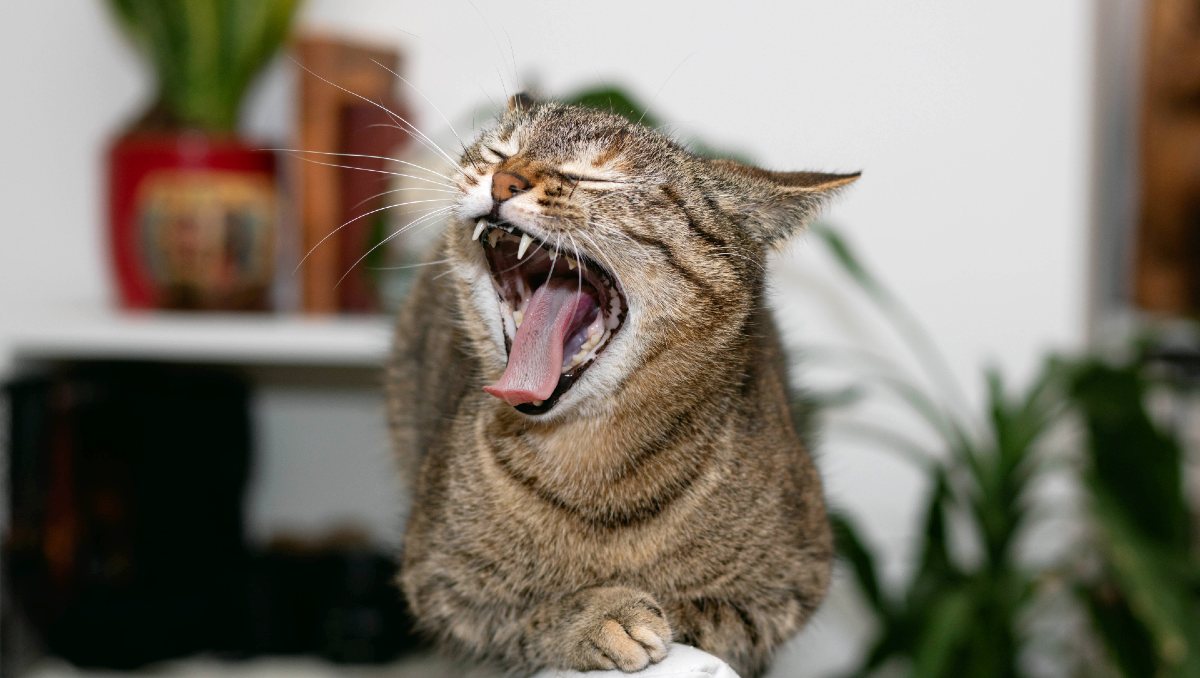
Separation Anxiety
This is a biggie and getting bigger by the minute as many cat parents return to the workplace. Separation anxiety accounts for 10-20% of referrals to veterinary behaviorists.
Both environment and genetics can play a role in cat separation anxiety. Cats who have been abandoned or shuffled around to different homes may develop this condition.
A cat with separation anxiety forms a hyper attachment to a member of their pack. You rarely, if ever, enter a room without them trailing behind. And they can’t find comfort or relax without you there with them.
They may even try to sneak between you and the door as you go to leave. Once left alone, that stress and anxiety can lead to marking and destructive behavior. A cat won’t necessarily destuff cushions or chew up slippers like dogs, but they can still be destructive– tattered couch legs and mangled carpets.
Aggression & Anxiety
There are several types under this aggression umbrella, but it also follows that cycle of fear or phobia, anxiety, and stress for the majority of them. Add aggression to the cycle in these instances.
Aggressive behaviors differ because of the motivation, but they’re generally one part fear, anxiety, uncertainty, and one part learned response– that aggression = no more threat. Genetics, environment, and history play their role in these behaviors, too.
Cats are both predators and prey and, in multi-cat households, have a social hierarchy. Cats also happen to be very territorial, so it’s not necessarily unsurprising that these instincts create situations that trigger aggressive reactions. And while aggression isn’t uncommon in cats, when it falls out of the range of normal cat behavior and becomes challenging to manage, you need to get help.
Marking Territory
Since cats are, by their very nature, territorial, their anxiety can be rooted in their inability to defend that territory. In the wild, they’d simply be able to chase that other cat off, though they still may mark for good measure.
So, if your lone apartment cat starts marking, it’s not as much of a head-scratcher as you’d think. If he has access to windows, even the sight of a cat will signal that that whiskered passerby is here to take over my territory. Remember, anxiety isn’t necessarily rooted in rationale in any species.
Intact male cats tend to be much worse, so if this behavior starts, consider whether neutering is in the best interest of all parties. Keep in mind that it’s a lot easier to correct behavior early than after it’s become deep-rooted, too.
Generalized Anxiety
Unspecified anxiety can happen to any cat, any time, anywhere. The uncomfortable feelings that accompany generalized anxiety are the same, no matter the type or cause. What’s important is practicing awareness to understand the triggers better.
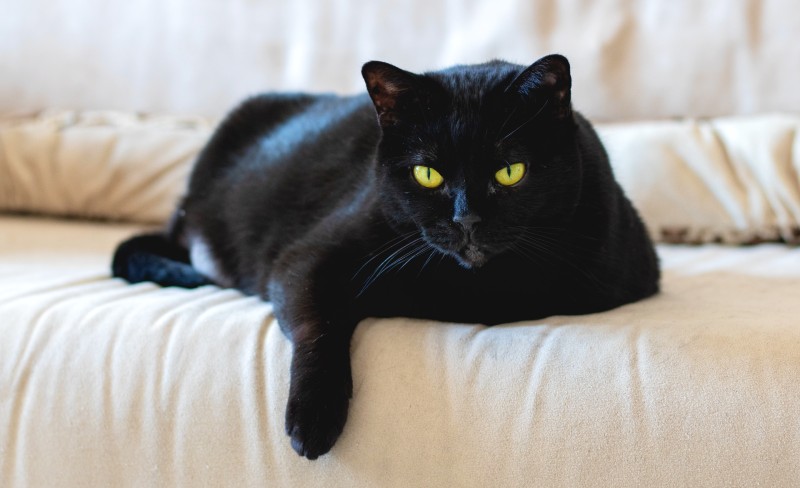
Litter Box Problem Behaviors
If the behavior is litter box related, the solution may be as simple as getting more litter boxes, especially in multi-cat households. You’ll want to rule out any physical issues by going to the vet. Once cleared, look at their situation– the number and location of boxes, cleaning routines, and type of litter. Cats are particular about the kind of litter, box, and location, so try to address any of these needs. All of these factors can be contributing to your cat feeling stressed.
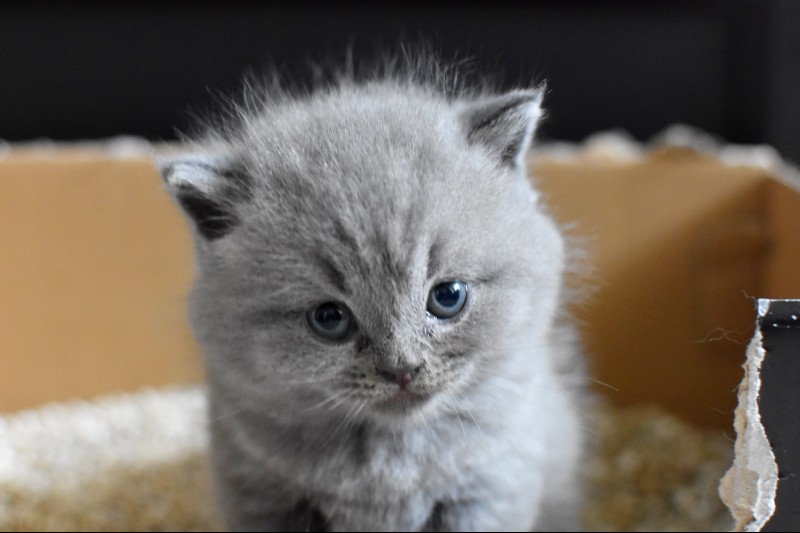
No matter the type of anxiety, the feelings of anxious cats are the same. Each and every cat is experiencing these overwhelming emotions of worry, fear, and stress. So, some of the foundational tools we use, how we curate their bowl, and the positive reinforcement we employ are all the same. The biggest difference is the approach we take to address the behaviors since the triggers vary.
Aging & Anxiety
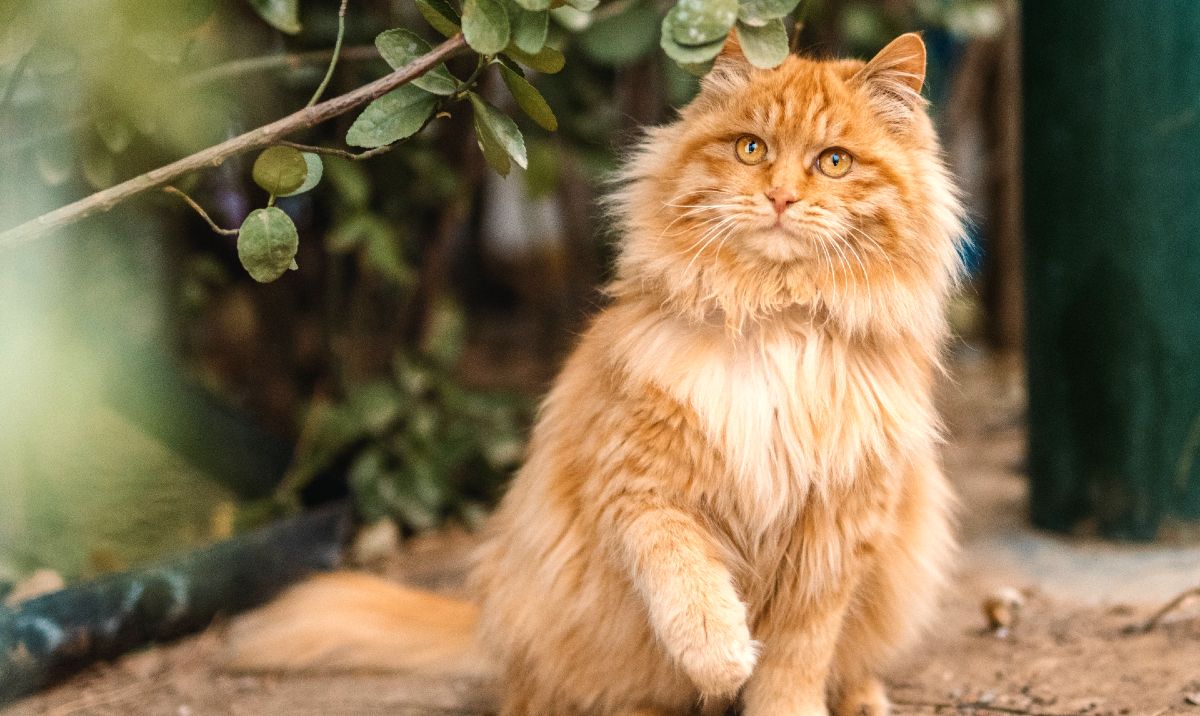
Anxiety can set in as cats age, especially if the cat is also experiencing memory problems or dementia. The research tells us that 50% of cats aged 15+ show signs of cognitive dysfunction. Cats in their golden years may also be in pain from ailments like joint dysfunction or suffer from a disease commonly seen in older kitties called hypothyroidism, both of which can increase feelings of depression and anxiety.
This is why it’s so important to proactively nourish your cat’s brain with DHA from the time they are a kitten.
Omega-3 essential fatty acids aren’t just good for our mental health. Incorporating these fatty acids into your cat’s diet can support brain health, and research is even exploring its ability to help with depression and decelerating brain aging.
Mental Disorders
While we can’t exactly sit a cat down for therapy sessions, research has definitively shown that cats suffer from PTSD, OCD, and depression. We must be aware of these disorders because symptoms can overlap. For cats, anxiety can often look like depression, OCD shares some of the same stress behaviors that anxiety does for cats and PTSD.
Cats experiencing PTSD may try to flee the scene of frightening situations or become aggressive. Anything that can cause PTSD in humans– natural disasters, abandonment, death, abuse– can be a trigger for cats as well.
And yes, cats get depressed, too. Not only do they experience the same symptoms as two-leggers, but the reasons for depression are similar, too. Look at their environment first since stressors are the biggest cause.
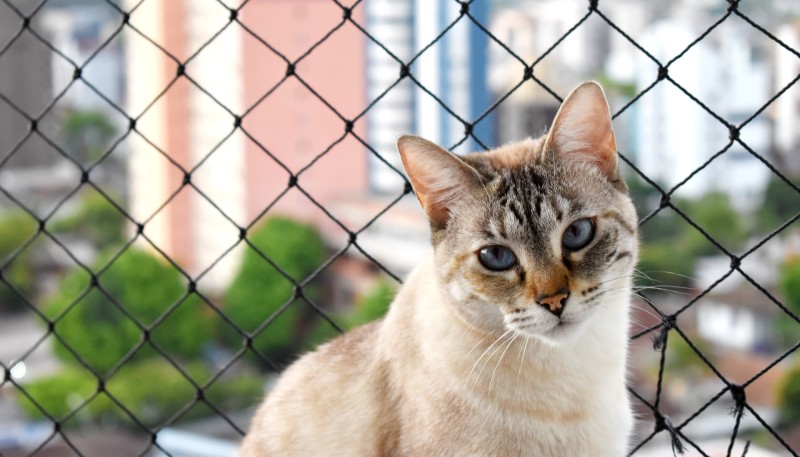
OCD is more common in cats than dogs, with behaviors like compulsive pacing, grooming themselves (to the point of creating a bald spot), or constantly chewing on a particular piece of fabric or blanket. The repetitive behaviors or OCD tendencies provide a coping mechanism, an outlet to frustration and stress for these animals, so the first thing to do is consider their environment.
Being in tune with your cat and practicing awareness can help you see these signs and symptoms earlier. Remember, you know your cat and the experiences they’ve had, and that should help you figure out what is going on.
Editor’s Note: Any cat suffering from depression should see a vet for a complete work-up to rule out any underlying medical issues.
Can You Avoid Or Prevent Anxiety In Cats?
Prevent? Eh. Anxiety is a natural emotional response, but avoiding anxiety and preventing problem behaviors? Absolutely!
Socialize your kitty early and often. Introduce your cat to new two-leggers and four-leggers, new experiences, and a variety of environments. Play often– and not just when they’re young but at every stage of their lives.
Continuing their education with brain games and different types of play keeps their mind and brain flexible. They’re problem-solving and using their noggin, which alleviates boredom and frustration that often leads to anxiety and those problem behaviors.
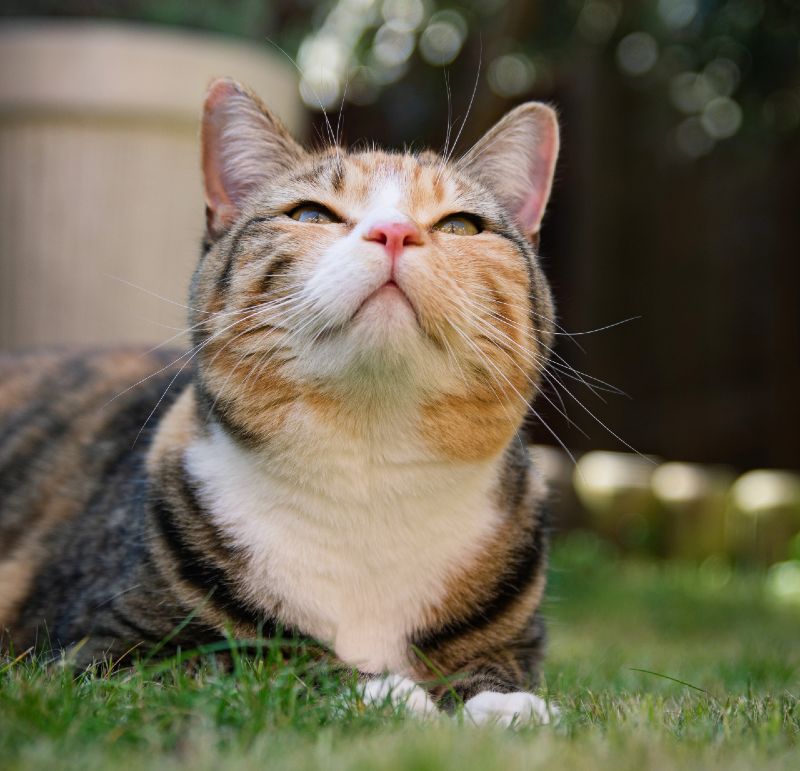
Common Misconceptions
Cat Breeds Without Anxiety?
A cat may have a few more genetic predispositions to anxiety, but they are shaped by their experiences as much as we are– the whole nature vs. nurture thing. And we, as humans, have the biggest impact on them.
Use that to engage them, socialize them, introduce them to the experiences the world offers.
Problem Behaviors Like Peeing Outside of the Litter Box Are Impossible to Solve
It’s understandingly a frustrating cycle, one that has pet parents at the end of their rope by the time they do seek help for it. It quickly becomes this ultimatum of progress or else.
But here’s the thing. These behaviors, while unbelievably inconvenient, are your cat’s way of communicating with you. They aren’t bad or vindictive cats. They’re telling you, hey, I’m stressed, or I don’t feel well, or help address my needs.
So, take a breath, and follow these tips on how to approach this issue head-on.
How to Help An Anxious Cat
It’s important to keep in mind that this isn’t an overnight change or like solving a problem. There are no cheats or shortcuts– it’s going to take time and commitment on your part.
Treatment for anxiety typically involves finding the right blend of environmental changes and herbs.
There are also a few things you can do, anxiety or not, to prioritize their mental and emotional wellbeing. We can rewire our cat’s brains to help them see the bigger picture and focus on the positive. Every cat can benefit from environmental changes like…
More Exercise
While cats tend to look like they have a rich interior world, they can get bored easily. Play with your cat often, trying different types of toys to see what they like. Doing this while you’re home might encourage them to play on their own when you’re away from home.
Add scratching posts and cat trees to your home to create a feline jungle gym. A cat tree near a window will let him see what’s going on outside from a safe distance. If you’re able to build a catio, even better!
Mental Stimulation
Give your cat little jobs to do. It could be foraging through a snuffle mat or stalking a lure. Build play into their everyday life by setting treats at the top of their cat posts. Make them use their problem-solving skills often and mix up the play.
As adept hunters, play offers an acceptable outlet for those feline instincts, offering mental and emotional enrichment to relieve pent-up energy, frustration, and stress, making problem behaviors less likely.
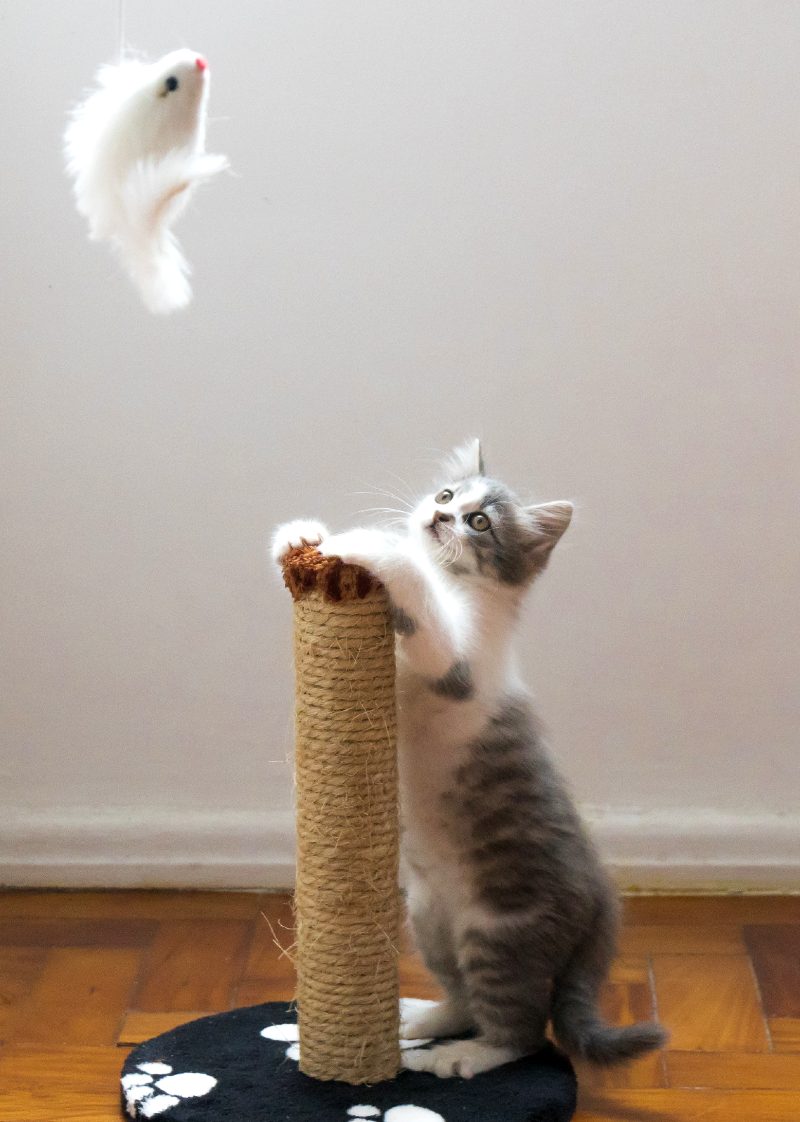
Time Together
Whether it’s time curled up on your lap or perfecting her obstacle course routine, cats need to interact with their hoomans frequently. It may not be for long periods, and it’s on her terms, but the time together is crucial for mental wellbeing.
Stick to a routine (that includes the litter box)
Even small changes in routine, from guests dropping by to an unattended litter box, can inspire anxiety. While you aren’t necessarily going to stop house guests altogether, you can make sure she has a designated safe space and that she gets plenty of playtime before they come.
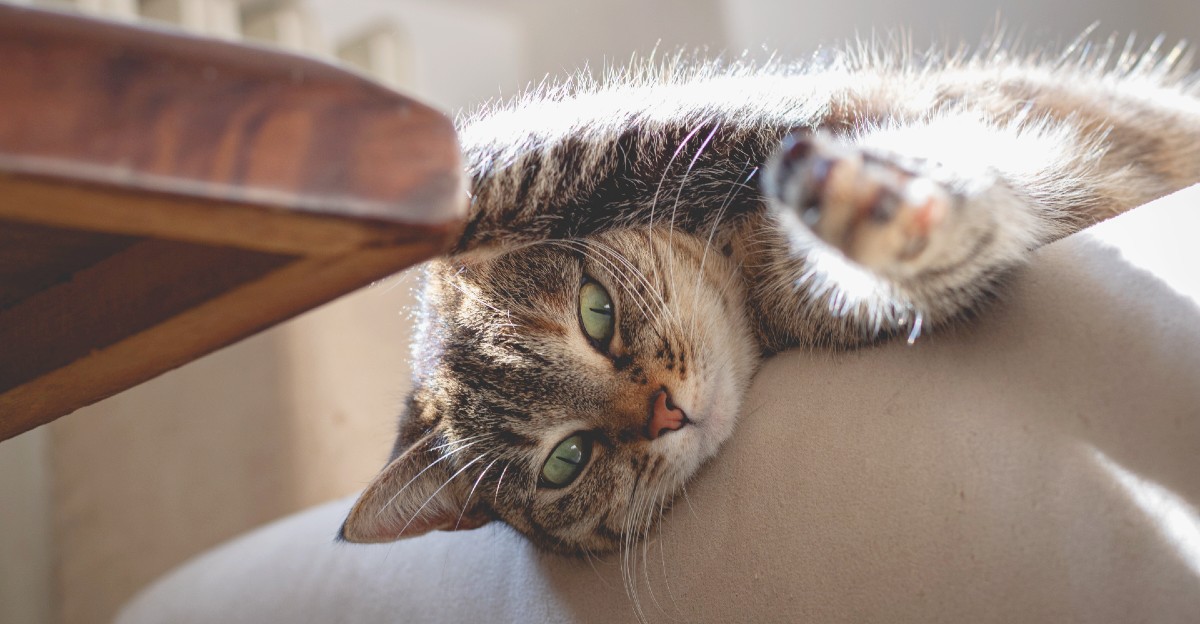
Have safe spaces
It could be that cat tree or an entire room that your cat can retreat to when feeling overwhelmed. It just needs to be a designated space (she chooses) that makes her feel safe and untouchable.
It not only gives them their own personal space, but it can alleviate the frustrations around territories in multi-cat households or even between new family members and their four-leggers. Cat shelving or cat trees expand a cat’s territory upward so that everyone feels welcome to co-exist in the same space, which can ease territorial frustration.
Cue the Cat Music
Not just any music will do. A recent study out of LSU tested the calming effects of music for cats during vet visits. The results showed that, for agitated cats, specifically designed music calmed their stress most and allowed for vets to handle them more easily.
The concept behind cat-specific music is that emotional centers of the brain develop shortly after birth for cats. Since purring and sucking sounds are common during this developmental stage because they’re nursing, the thought was to layer these sounds and frequencies of cat vocalization into the tempo when creating the music. You can listen for yourself here.
Bring in (Positive) Reinforcement If Need Be
Be open to trying different approaches. If you need to consult a behaviorist, there are plenty of options locally and now remote. Be sure that whoever you choose practices non-aversive, force-free techniques.
Bookmark these resources:
https://felinebehaviorsolutions.com/
https://www.catbehaviorsolutions.org/
Editor’s Note: These behavioral approaches should be used after seeing a vet for a full work-up to rule out any underlying medical issues.
Once you put these practices in place, it’s time to curate the bowl for the anxiety cat.
Curate the Bowl for the Anxious Cat
With Herbs To Balance Those Emotional Highs and Lows
The Western medical approach to treating anxiety in cats focuses on managing symptoms, usually without considering how emotional balance affects your cat’s health and wellbeing.
Anxious cats will often leave the vet with a prescription for anxiety/depression medications– which praise kitty we have them! But there is more that you can do for long-term, lasting relief. That’s why Dr. Bessent embraces an integrative approach that marries eastern & western medicine to provide a comprehensive plan.

The Traditional Chinese Medicine (TCM) approach focuses on bringing the whole body into balance, not solely focusing on brain chemicals. TCM would refer to it as the balance between the heart, a fire element (yang), and the kidney, a water element (yin).
Anxiety happens when emotions are rampant and unrestrained– an anxiety cat can’t control these extreme emotions or heat. Since health and balance–mental, physical, emotional go hand-in-hand, the goal is to restore your cat’s equilibrium even in the face of challenges or changes.
Editor’s Note: Based on what TCVM refers to as the Five Element Theory, cats as a species fall under the element of fire. They flit like flame, and their constitutions are emotional and easily excitable, so their disharmony (e.g., emotional imbalance) can cause excessive emotional, and in turn, physical stress, which can quickly manifest into anxiety.
Using a combination of spirit-calming herbs in concert with heat-draining herbs and harmonizing herbs, we can slowly correct the disharmony and bring anxious cats back to a more centered and healthy emotional balance.
Synbiotics to Increase Serotonin Levels
Next, the focus is the gut microbiome. Your cat’s microbiome is made up of trillions of microorganisms (bacteria, fungus, viruses, and more). It plays many key roles in maintaining health, impacts everything from gut health to allergies to brain function, and helps keep the immune system running smoothly.
When the microbiome is healthy and balanced, so is your kitty because the microbiome can affect mood positively or negatively. With therapeutic levels of synbiotics (probiotics & prebiotics), these good bacteria flood the gut and help to balance the microbiome. And a healthy gut microbiome produces serotonin for a calmer kitty.
Pick the Right Foods To Guide The Body Towards Balance
Pre-Req: Before you get into using this technique, you have to be feeding a species-appropriate diet. For your carnivore, that means real, whole foods made up of 80-90% skeletal and organ meat and fewer carbs, 5-14% at most from veggies, fruit, and seeds.
As the calming herbs work to balance the anxiety cat, you can also utilize the principles of food energetics, choosing the right foods to move the body further towards balance.
Since anxious cats have too much heat or emotion, they respond exceptionally well to neutral or cooling foods like fish, duck, or rabbit, compared to warming or hot foods like venison or lamb, which exacerbate their anxiety (heat).
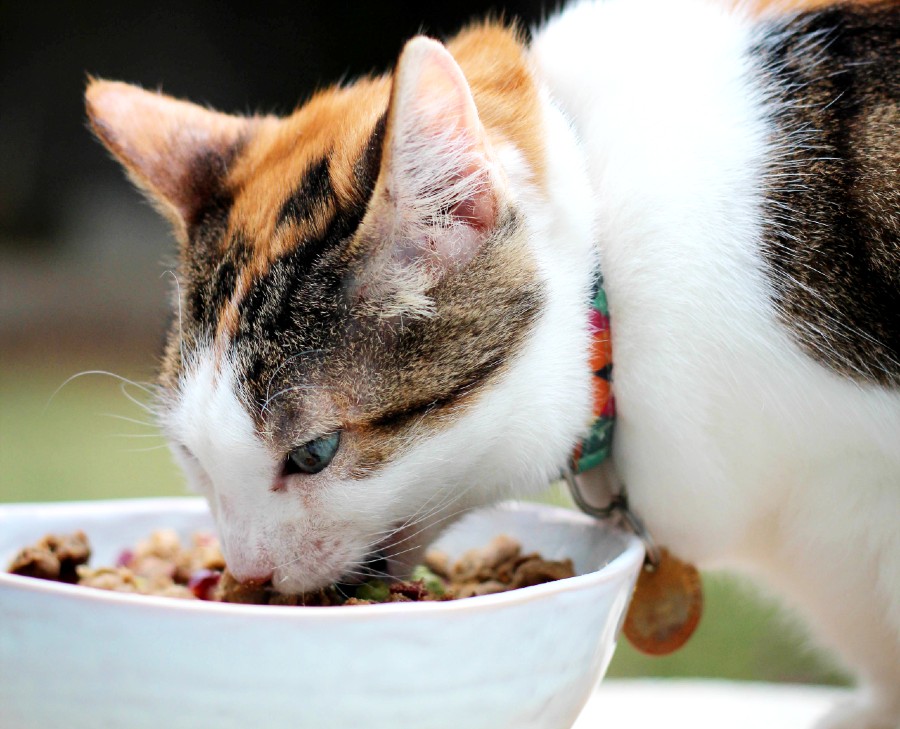
Will Anxiety Go Away Completely?
Obviously, you want to address problem behavior, but the way to do that is to address what’s causing that stress and anxiety in the first place.
So, think about the bigger picture of mental health and emotional balance instead of this being a problem to solve. Your cat is a complex individual. She has her own set of expectations, she has her own terms, and of course, her own emotional responses to life going on around her.
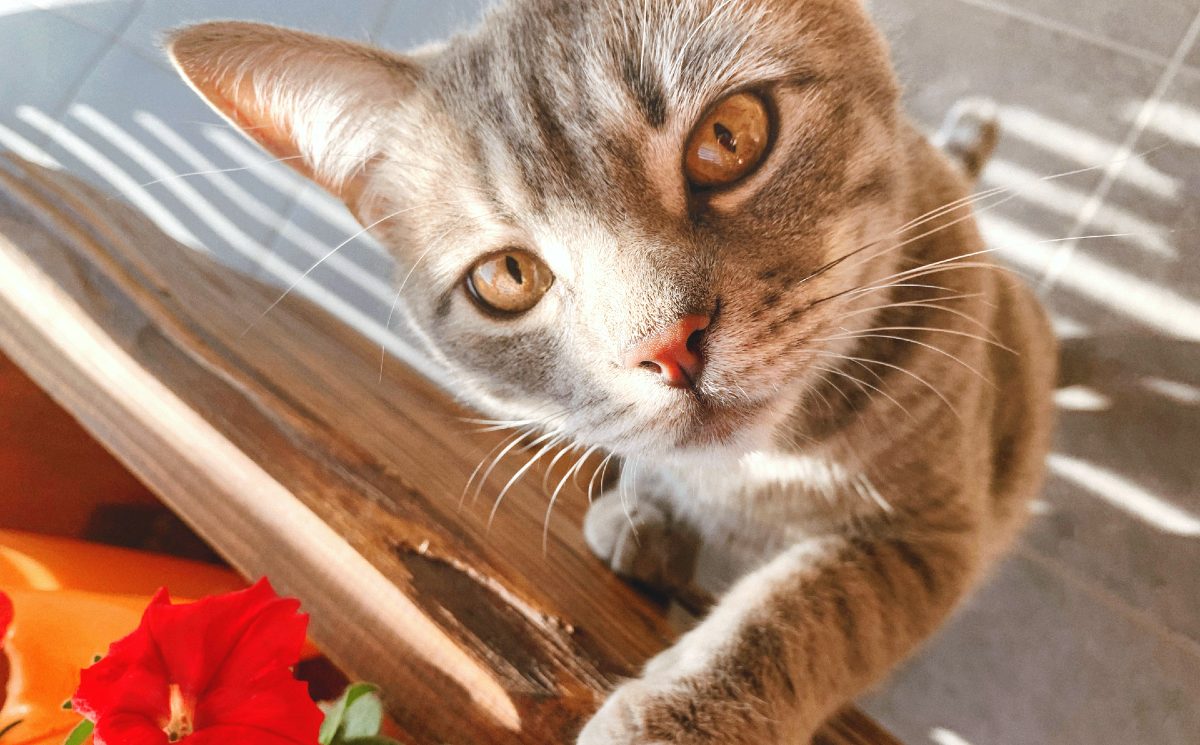
A history of positive and negative experiences shapes who your cat is. Their mental and emotional well-being is as fragile as ours.
Pause and think about how you prioritized your cat’s mental health today. What are they communicating to you– are your cat’s wants and needs being met?
By doing that, you can strengthen your bond with them, making a big difference for them and yourself along the way.
Don’t hesitate to reach out in the comments below. We’re here to lend a helping paw, and that includes a free personalized recommendation on how to curate the bowl for your cat.
Share this Post

Dr. Chris Besent
Chris Bessent, DVM, MSOM, Dipl. OM, L.Ac. has over thirty years of experience in veterinary medicine including certificates in veterinary acupuncture, veterinary chiropractic and veterinary Chinese herbology. Imbued with Eastern philosophy and the knowledge that food is the foundation of health, Dr. Bessent also received her degree in veterinary nutrition and began to formulate recipes fit for a carnivore from nothing but whole foods. Currently, she divides her time between the Simple Food Project and Herbsmith, both of which are owned and operated out of her facilities in southeastern Wisconsin.

Jen Stiff - Contributor
Jen is a freelance writer, editor, and storyteller. She lives in San Diego with her rescue dog, Meatball (breed: Alaskan Eskimo chicken nugget remix). Meatball meows like a cat but does not bark and loves sunshine more than life itself. Besides Meatball, Jen also loves toast, traveling, and reading under puffy clouds.

Kayla Behling - Editor
Kayla is the Content Writer for Herbsmith. She has a cat named Professor Cat-Faced Meowmers, who goes by Kitty, and a goof of a dog, named Duck. She stays busy biking trails, playing board games, and searching for the next best craft beer.
